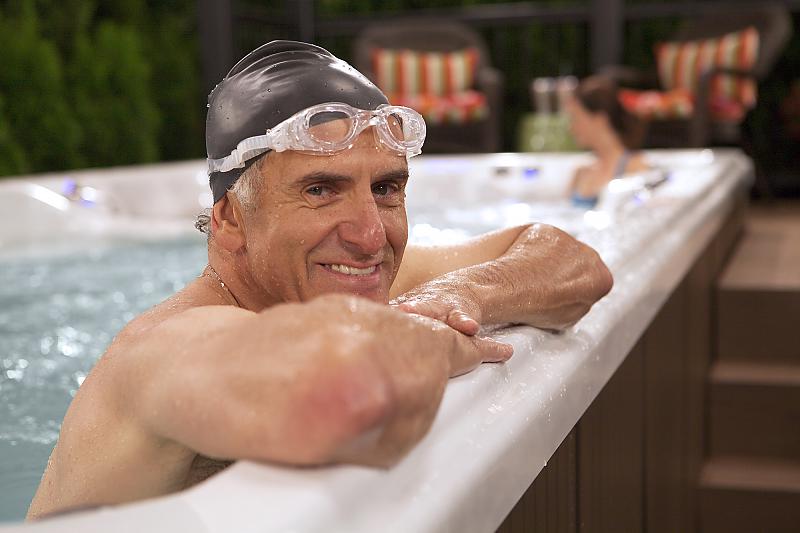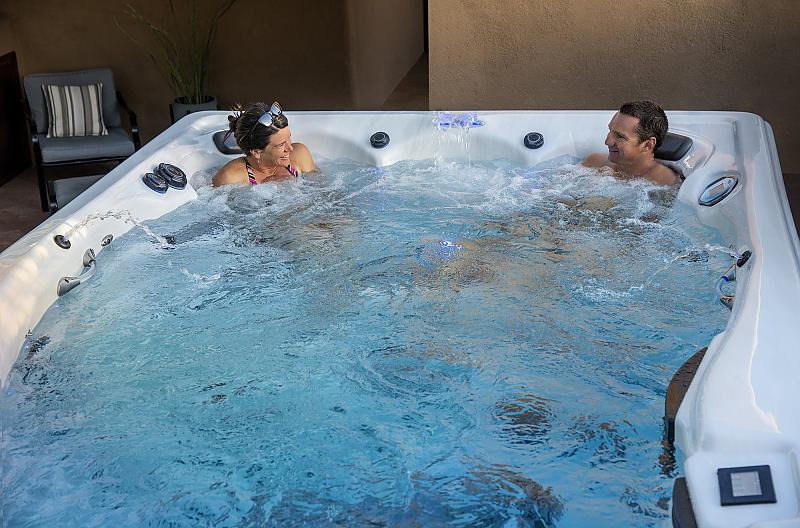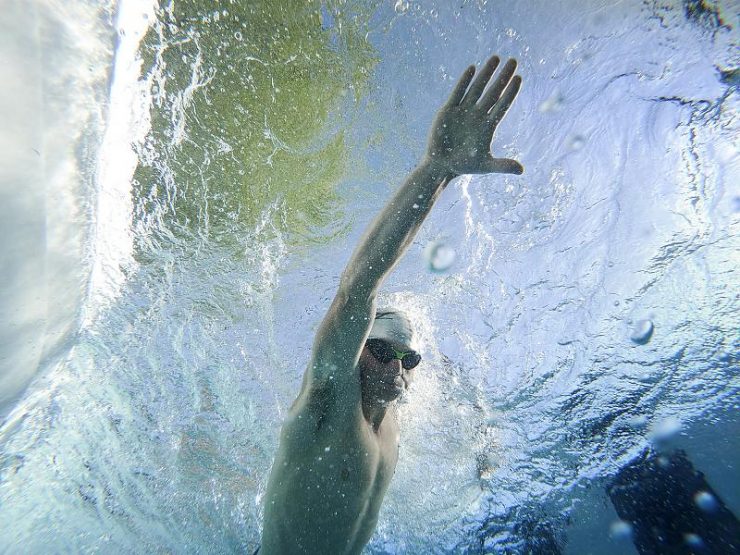According to Dr. Michael Kellmann, author of the book “Enhancing Recovery: Preventing Underperformance in Athletes,” “the importance of recovery for elite athletes cannot be overemphasized.”
Adaptation, change, and taking performance to the next level happens not during the hard session but after — when the body is at rest. And if athletes, whether they are pros or enthusiasts, do not give their bodies proper rest, they can dig themselves into a performance hole.
“It’s easy for athletes to think that if they’re going hard, they’re getting fitter. That’s not true,” says Matthew Weatherley-White, co-founder of a popular-among-pros online tool called Restwise that helps athletes know how recovered they are. “Hard work creates the conditions for physiological adaptations. And adaptation happens during recovery. If you don’t hit the best stress-to-recovery balance, you’re not optimizing your training.” [source]
With a swim spa by Master Spas, you can maximize your recovery — and performance. Here are three things every triathlete should do.

Active Recovery for Triathletes
Active recovery can sound like a contradiction. After all, how can you be active and recovering at the same time?
But research suggests that light exercise, aka active recovery, can help “flush” lactic acid from the muscles. It also helps improve circulation, bringing much needed oxygen to tired muscles and easing inflammation.
A light session, too, can do wonders for your mood if a day without a sweat session makes you feel irritable.
The goal of active recovery is to get the body moving and slightly raise the heart rate.
Aqua jogging, walking, or an easy swim are great ways to get in some movement. With a swim spa by Master Spas, there’s little effort to get in a short session. Just walk out the door, remove the swim spa cover, and get in.
The water in the swim spa, which is perfect year-round, helps improve mobility and eases the pressure on the joints so that you can recover better and perform at your best.
Rest and Sleep
When you are training for a triathlon, it’s not just about the time in the swim spa or miles on the road. It’s also about the time you spend sleeping as rest is an important component of recovery for triathletes.
According to a 2013 article in the Strength and Conditioning Journal, sleep “has been identified as an important factor contributing to optimal athletic performance.” But the stress of training can make it challenging to get a good night’s rest.
But a swim spa by Master Spas can help you catch some Zzz’s and be an integral part of your sleep hygiene routine.
A swim spa has many of the same feature of a hot tub, which has been shown to improve sleep. The warm water reduces stress on the body, helps to alleviate pain, and increase your core temperature.
Why is that last part important?
After getting out of the warm water, your body temperature will dip — helping you to get to sleep more quickly and sleep more deeply.
Read more about how a hot tub can help you sleep.

Massage
Many coaches and physical therapists will suggest athletes get regular massages to ease soreness and stiffness, as well as a way to prevent injury.
Light massage can help calm the nervous system and jump start the body’s repair process. A more vigorous massage can help work out any knots in the soft tissue, as well as ease stiffness.
But a massage can be all about the timing.
According to a 2009 study in the British Journal of Sports Medicine, massage immediately after a hard session made it more difficult for the body to remove lactate from muscle. Waiting three hours – or more – was more beneficial.
For triathletes, they can follow up a tough morning brick with 20 minutes in a swim spa at night.
Swim spas by Master Spas feature contoured therapy seats with adjustable massage jets. The StressRelief Neck and Shoulder Seat™ can ease tension across the upper back, where muscles are tight from swim intervals. The Xtreme Therapy Cove targets the posterior chain, focusing on the back, glutes, and hamstrings that are used during the bike and run.
Athletes can adjust the jets to get the massage that best fits their comfort level and needs.


